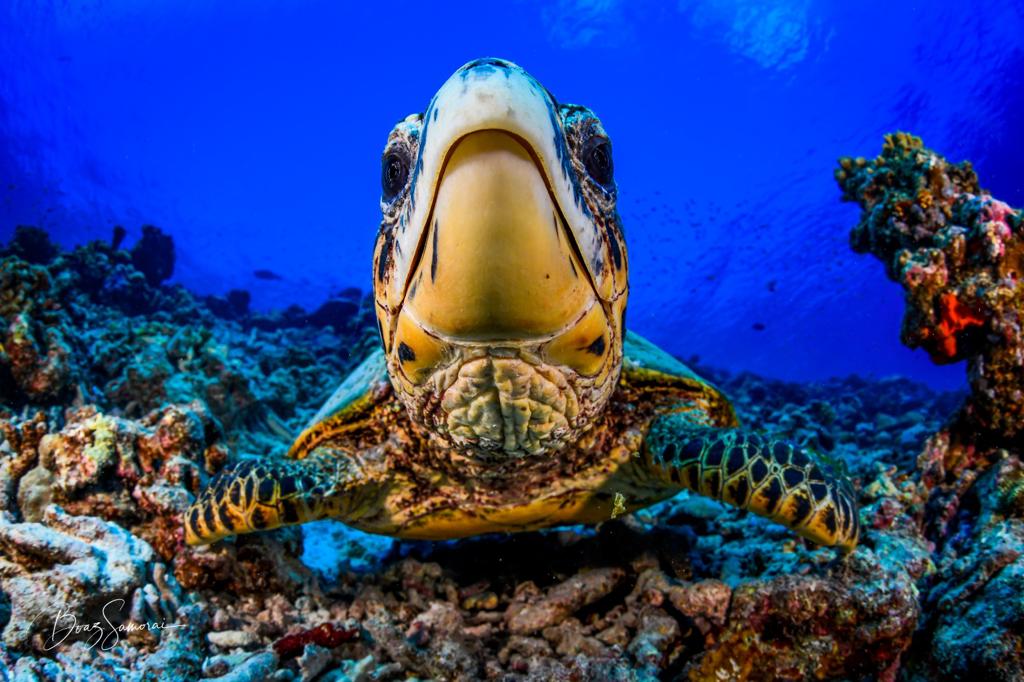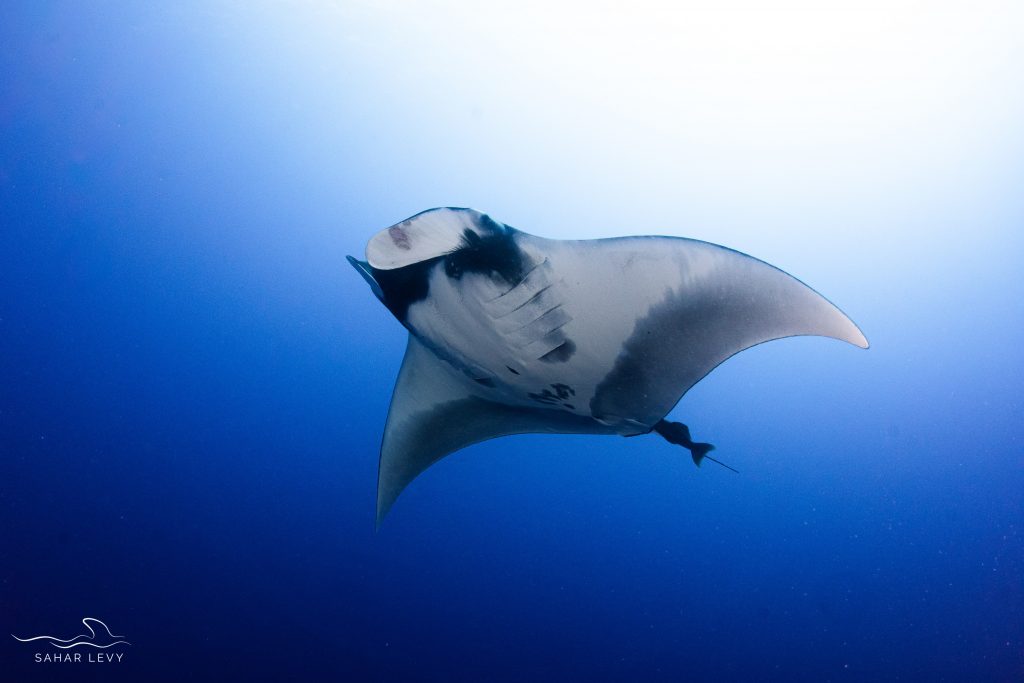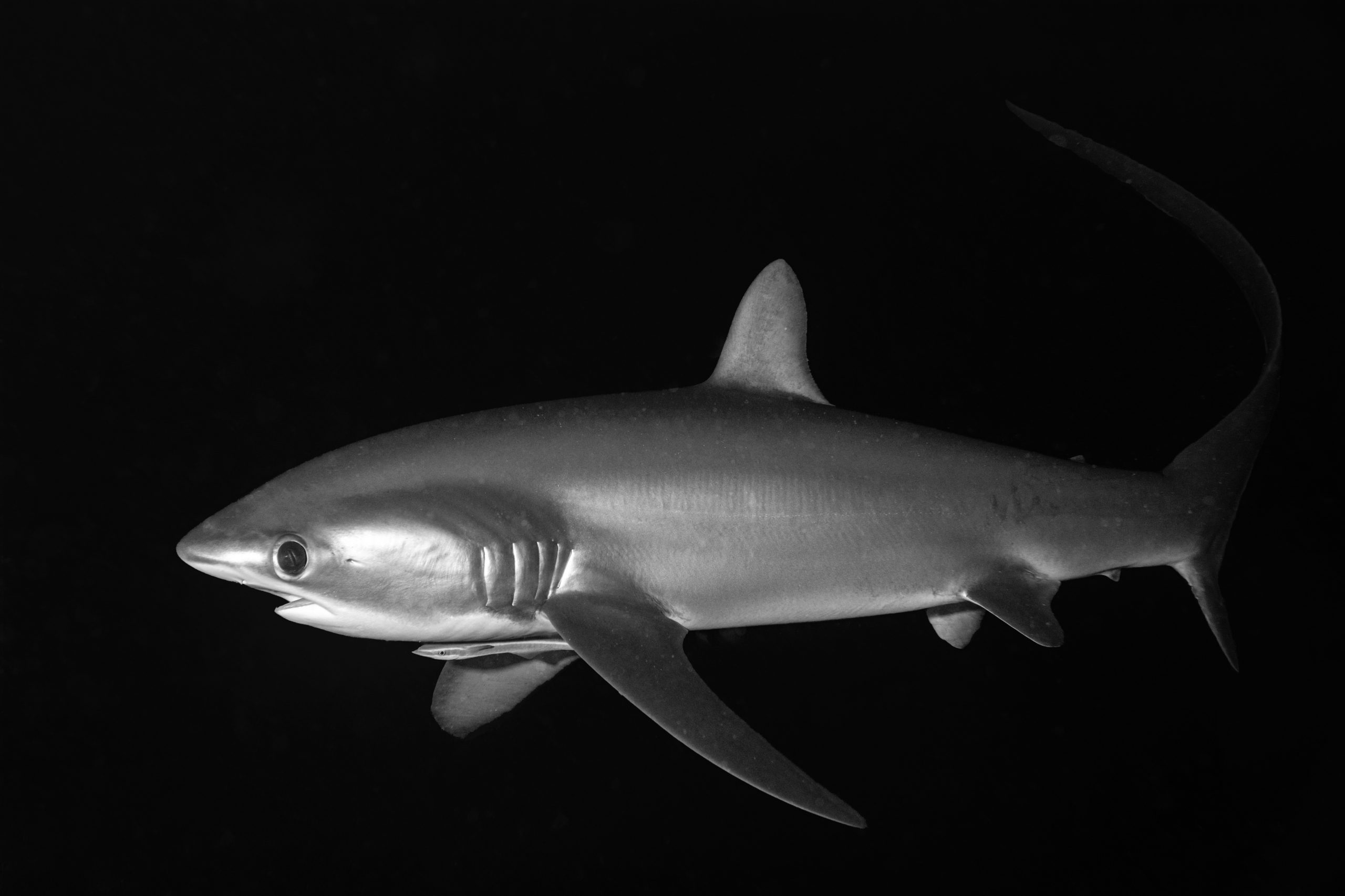Fuvahmulah Scuba Diving
Scuba diving in Fuvahmulah needs to be on every diver enthusiast’s diving bucket list! Not only is it home to some of the world’s most stunning diving sites, it’s diving experience is unmatched! A lot awaits you when you go diving in Fuvahmulah, from the stunning and lively coral reefs to the countless creatures you will encounter during your underwater trip. Keen to learn more about what you can expect when diving in Fuvahmulah? Let’s explore what marine life and adventures await you!
Marine Life Overview
The marine life in Fuvahmulah is renowned for being vibrant and diverse, with a variety of species that can be found all year long. The possibility of coming into contact with large pelagic species, such as tiger sharks and whale sharks, is one of Fuvahmulah’s main draws for divers.
Fuvahmulah is home to a wide variety of marine life, including schools of vibrant reef fish, rays, turtles, and octopuses. The coral reefs around Fuvahmulah are likewise teeming with life, including many different types of sponges, anemones, and hard and soft coral species.

Marine Species You May Find When Diving With Us
When you embark on your Fuvahmulah diving trip with Pelagic Diver’s Fuvahmulah, you are bound to come across a variety of species! Here are five species you can expect:
Tiger Shark
The tiger shark is one of our most popular attractions in Fuvahmulah. Tiger Sharks can be found worldwide in tropical and subtropical regions. They can grow up to 5 meters (16 feet) in length and are recognized by their characteristic stripes, which tend to progressively fade as they age.
Tiger sharks are opportunistic feeders and will consume nearly everything, including fish, turtles, birds, and even trash. Tiger sharks are an essential component of marine ecology, maintaining the balance of ocean populations.
When you encounter a tiger shark on your Fuvahmulah diving excursion, it is important to treat them with caution and respect!
Read more about our tiger sharks blog.
Whale Shark
The whale shark, the biggest fish, can be found worldwide in tropical and warm temperate environments. They can grow to a length of 12 meters (40 feet) and weigh 21 tons.
Whale sharks are filter feeders who mostly eat plankton and tiny fish, despite their enormous size. With a broad, flattened head and a pattern of white spots and stripes on their dark skin, they are recognized for their unusual appearance.
Whale sharks are known to be gentle giants who are reputed to be peaceful near humans despite their enormous size.
Read more our whale shark blog.
Hammerhead Shark
The hammerhead shark can be found worldwide in tropical and warm temperate environments. They are distinguished by having heads that are flattened and spread outward into a broad hammer-like structure.
Fish, squid, and octopus are just a few of the many prey items that hammerhead sharks consume. They employ a novel method of hunting, scanning the ocean floor for prey and sensing electrical signals with their large heads.
Read more our hammerhead shark blog.
Oceanic Manta Rays
The oceanic manta ray is a large species of ray found in tropical and subtropical waters around the world. They can grow up to 7 meters (23 feet) in wingspan and weigh up to 2,300 kilograms (5,100 pounds).
Oceanic manta rays are filter feeders, using their wide mouths to scoop up plankton and small fish from the water. They are known for their graceful swimming style and their distinctive appearance, with a dark dorsal surface and white ventral surface.
Don’t let their size fool you as they are gentle creatures and are known to be curious about humans.
Read more our oceanic manta blog.
Thresher Shark
The thresher shark is a unique species of shark known for its long, whip-like tail which it uses to stun and catch prey. They are found in tropical and temperate waters around the world, typically in deep offshore areas.
Thresher sharks primarily feed on small fish, squid, and crustaceans, and use their long tails to herd and stun their prey. They are also known for their distinctive appearance, with slender bodies and large eyes adapted for low-light environments.
Thresher sharks are generally shy and non-aggressive towards humans and are considered to be a low risk for divers.
Read more our thresher shark blog.

Best Time To Dive To Explore Each Species
We have compiled a list of when it is best to dive with each species mentioned above so you can plan your trip accordingly:
- Tiger Sharks: All year round
- Whale Sharks: January to May
- Scalloped Hammerhead Shark: October to April
- Oceanic Manta Rays: March to May
- Thresher Sharks: All year round, better sightings during October to December
Let’s Go Diving in Fuvahmulah!
Fuvahmulah diving is guaranteed to be an experience of a lifetime! Not only will you get the chance to dive in one of the world’s best diving sites but you get to do it with some of the world’s most fascinating creatures. Fuvahmulah is renowned for its marine life and you can witness it firsthand! Whether that is diving with Tiger Sharks, Hammerhead Sharks or other species, you can make this diving experience ultimately yours! Check out our popular packages or promotions and start diving with us today!
Frequently Asked Questions
- What sharks can I see when Fuvahmulah diving?
When Fuvahmulah diving, tiger sharks are the main attraction. Tiger sharks are guaranteed sightings all year round. Divers are also able to encounter threshers sharks, scalloped hammerhead sharks, whale sharks, oceanic thresher sharks and oceanic white tips. When Fuvahmulah diving at the reef, divers are also able to see white tip reef sharks, grey reef sharks and silver tip sharks.
- Which Fuvahmulah diving site is the tiger shark?
Tiger Harbour is the main Fuvahmulah diving site for tiger shark encounters. This Fuvahmulah dive site is located at the entrance of the harbour and is between 8 – 10 meters in depth.
- When is the best month to come Fuvahmulah diving for sharks?
The best month to come Fuvahmulah diving is between October to December. During this period, divers are able to encounter oceanic thresher sharks and schools of scalloped hammerhead sharks along with the well known tiger sharks. The best time to come Fuvamulah diving for sharks also depends on which pelagic species divers would like to see.

